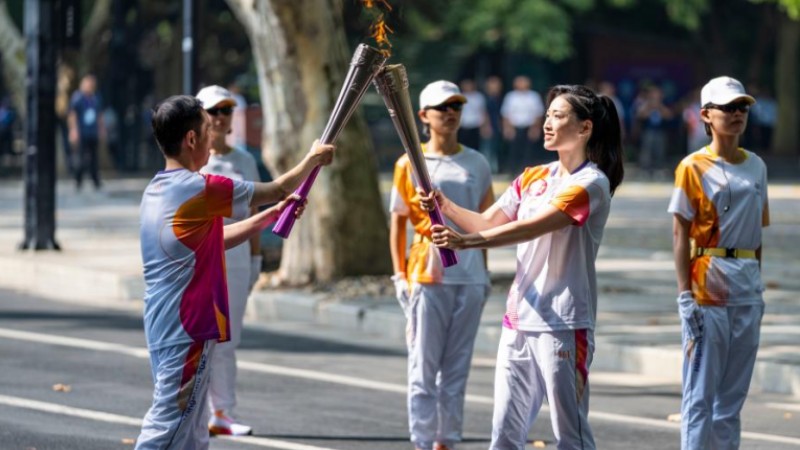Craftsman obsessed with root carving to build museum in NW China's Xinjiang
Dai Xin, 52, is an inheritor of the intangible cultural heritage of root carving in Alar city, northwest China's Xinjiang Uygur Autonomous Region.
A technician at a seedling base of the 10th regiment of the First Division of the Xinjiang Production and Construction Corps (XPCC), Dai has been obsessed with root carving for years. Using local forest resources, he has created various kinds of vivid root carving artworks, built a root carving plant, and set up exhibition halls for root carvings.

Photo shows a vivid root carving artwork at an exhibition hall of Dai Xin, an inheritor of the intangible cultural heritage of root carving in Alar city, northwest China's Xinjiang Uygur Autonomous Region. (Photo/Shi Yujiang)
Dai ran an orchard when he was 20. "There were plenty of tree stumps and roots there," he said.
Back then, Dai also searched for tree roots in the Gobi desert, which was a hard job. To find a root that could be used, he often spent the whole day at the edge of the desert, with the possibility that his efforts would turn up nothing. To him, abandoned tree roots with strange shapes are natural artworks.
In addition, Dai looked for tree roots in the homes of his friends, relatives, and colleagues. In August 2015, he found an ideal tree root in his friend's home and bought it for 200 yuan (about $27.40). Dai turned it into a root carving artwork, which he then sold for 15,000 yuan.

Photo shows a root carving artwork at an exhibition hall of Dai Xin, an inheritor of the intangible cultural heritage of root carving in Alar city, northwest China's Xinjiang Uygur Autonomous Region. (Photo/Shi Yujiang)
Dai got to know about root carving by chance. "I saw some vivid root carving artworks in my friend's home and developed a strong interest in the art form," he said.
Dai then consulted books and other materials to learn root carving techniques. When he read a report about a root carving artist in southeast China's Fujian Province, he went there by train to consult the artist. When he returned from Fujian, Dai purchased tools and began honing his root carving skills.

Photo shows root carving artworks at an exhibition hall of Dai Xin, an inheritor of the intangible cultural heritage of root carving in Alar city, northwest China's Xinjiang Uygur Autonomous Region. (Photo/Shi Yujiang)
"I began devoting myself to root carving in about 2012," Dai said, adding that he creates nearly 100 root carving artworks every year.
Nowadays, Dai's root carving artworks can be seen in the homes of many citizens and hotels in Alar city. His root carvings are also displayed at the city’s culture center.
"I really want to build a root carving museum to welcome people from all corners of the country," Dai said.

Photo shows a vivid root carving artwork at an exhibition hall of Dai Xin, an inheritor of the intangible cultural heritage of root carving in Alar city, northwest China's Xinjiang Uygur Autonomous Region. (Photo/Shi Yujiang)

Photo shows root carving artworks at an exhibition hall of Dai Xin, an inheritor of the intangible cultural heritage of root carving in Alar city, northwest China's Xinjiang Uygur Autonomous Region. (Photo/Shi Yujiang)
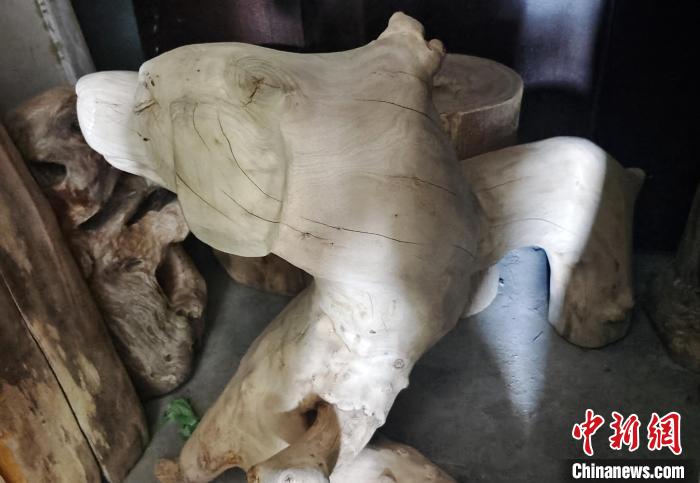
Photo shows tree roots collected by Dai Xin, an inheritor of the intangible cultural heritage of root carving in Alar city, northwest China's Xinjiang Uygur Autonomous Region. (Photo/Shi Yujiang)
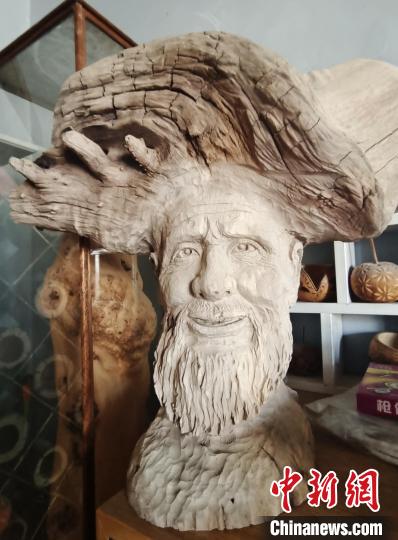
Photo shows a vivid root carving artwork at an exhibition hall of Dai Xin, an inheritor of the intangible cultural heritage of root carving in Alar city, northwest China's Xinjiang Uygur Autonomous Region. (Photo/Shi Yujiang)
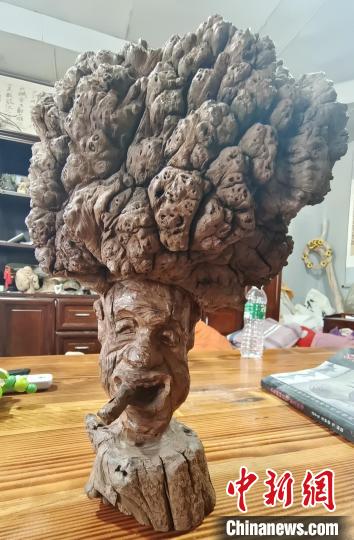
Photo shows a vivid root carving artwork at an exhibition hall of Dai Xin, an inheritor of the intangible cultural heritage of root carving in Alar city, northwest China's Xinjiang Uygur Autonomous Region. (Photo/Shi Yujiang)
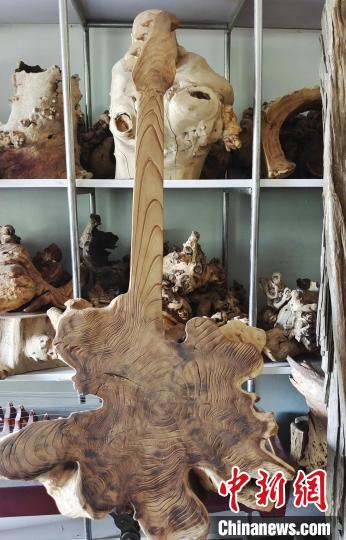
Photo shows root carving artworks at an exhibition hall of Dai Xin, an inheritor of the intangible cultural heritage of root carving in Alar city, northwest China's Xinjiang Uygur Autonomous Region. (Photo/Shi Yujiang)
Photos
Related Stories
- Inheritors inject modern vitality into traditional tin carving techniques in China's Shandong
- Fruit pit carving brings wealth to practitioners in E China’s Suzhou
- Artist in S China's Hainan dedicated to inheriting coconut shell carving
- Craftsman shows charm of porcelain engraving with excellent skills
- Xinjiang craftsman keeps Kazakh bone carving alive
Copyright © 2023 People's Daily Online. All Rights Reserved.






